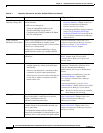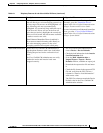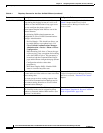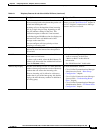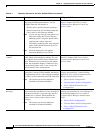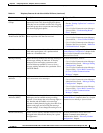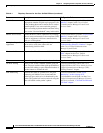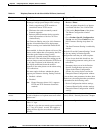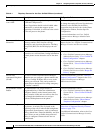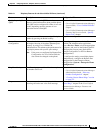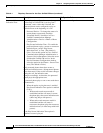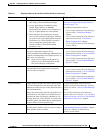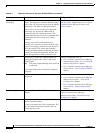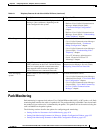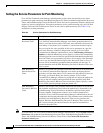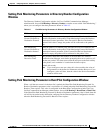
8-18
Cisco Unified IP Phone 8961, 9951, and 9971 Administration Guide for Cisco Unified Communications Manager 8.5 (SIP)
OL-20861-01
Chapter 8 Configuring Features, Templates, Services, and Users
Telephony Features Available for the Cisco Unified IP Phone
Power Negotiation
over LLDP
Allows the phone to negotiate the power using
LLDP and CDP protocols.
Power Negotiation should not be disabled when
connected to a switch that supports power
negotiation. If disabled, it could cause the switch
to shut off power to the phone.
The Power Negotiation is enabled by default.
To change the setting of Power Negotiation to
Disabled, select Disabled in the Power
Negotiation drop-down list box in the Phone
Configuration window, Product Specific
Configuration.
For more information, see Cisco Unified
Communications Manager Administration
Guide.
Presence-enabled
directories
Allows a user to monitor the call state of another
directory number (DN) listed in call logs,
speed-dials, and corporate directories. The Busy
Lamp Field (BLF) for the DN displays the call
state.
For more information, go to the “Presence”
chapter in the Cisco Unified Communications
Manager Features and Services Guide.
Privacy Prevents users who share a line from adding
themselves to a call and from viewing information
on their phone screens about the call of the other
user.
For more information refer to:
• Cisco Unified Communications Manager
Administration Guide, “Cisco Unified IP
Phone Configuration” chapter.
• Cisco Unified Communications Manager
System Guide, “Cisco Unified IP Phone”
chapter.
• Cisco Unified Communications Manager
Features and Services Guide “Barge and
Privacy” chapter.
Private Line
Automated Ringdown
(PLAR)
The Cisco Unified Communications Manager
administrator can configure a phone number that
the Cisco Unified IP Phone dials as soon as the
handset goes off hook. This can be useful for
phones that are designated for calling emergency
or “hotline” numbers.
For more information, go to the “Directory
Number Configuration” chapter in the Cisco
Unified Communications Manager
Administration Guide.
Programmable Feature
Button
The administrator can assign features to
programmable keys. When the administrator
configures features on the feature button, they
always remain visible and accessible to the user;
for example the administrator can assign a
dedicated Pickup button on the phone.
For more information, refer to:
• Cisco Unified Communications Manager
System Guide, “Cisco Unified IP Phone”
chapter.
• Cisco Unified Communications Manager
Administration Guide, “Phone Button
Template Configuration” chapter
Protected calling Provides a secure (encrypted) connection between
two phones. A security tone is played at the
beginning of the call to indicate that both phones
are protected. Some features, such as conference
calling, shared lines, Extension Mobility, and Join
Across Lines are not available when protected
calling is configured. Protected calls are not
authenticated.
For more information about security, see the
“Overview of Supported Security Features”
section on page 1-16.
For additional information, refer to the Cisco
Unified Communications Manager Security
Guide.
Table 8-1 Telephony Features for the Cisco Unified IP Phone (continued)
Feature Description Configuration Reference



